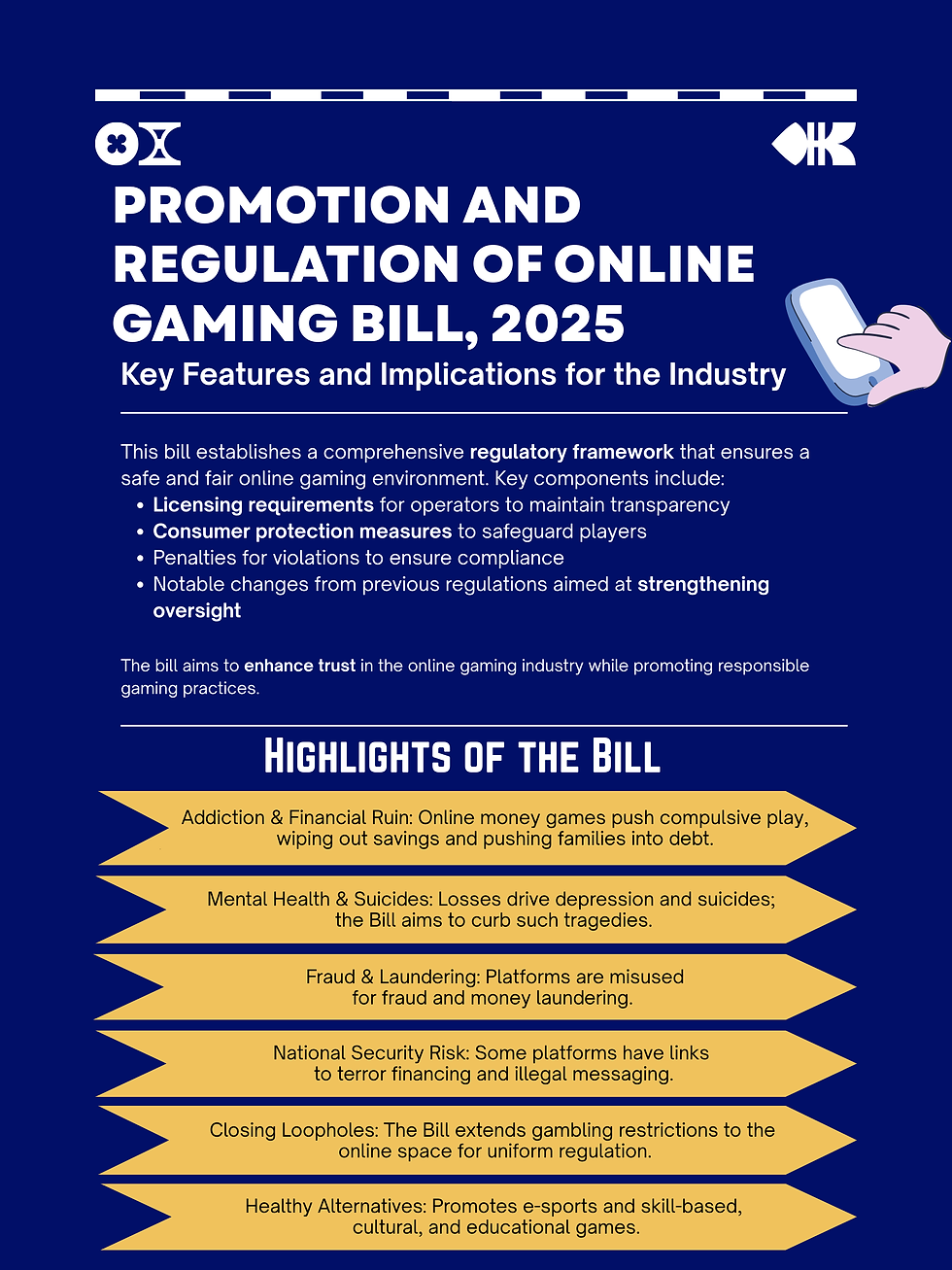Rahul Mishra's "Tigress" roars in the courtroom when fashion and law collide.
- davesh advocate
- Nov 13
- 3 min read

When fashion and law meet, the result can be staggering in the way we think about creativity.
The Delhi High Court injunction in favour of designer Rahul Mishra received much response
across India, particularly about the need to secure originality within the fashion industry of
India. At the centre of the controversy is Mishra and his now famous Tigress design, a piece
of art that combines her aggressive imagery with painstaking embroidery. The design has
been sported by the world leaders, such as Mark Zuckerberg, and by Anant Ambani in his
pre-wedding celebrations. What was once a mark of luxury and craft is now a replica of the
original, even in its reproduction, and ranges from 18,000 -20,000 to 3-4 lakhs.
What this may appear to be to the many is another scenario of knockoffs filling up the
marketplace, however this is a deeper problem. It is not only the watering down of the status
of a brand, but of the survival of the hundreds of craftsmen who spend months labouring to
make these creations. Mishra has on many occasions described how each garment supports
entire families in keeping the centuries old Indian embroideries alive. When unattributed,
mass-produced fakes are made without any creativity or ingenuity it is not just the intellectual property of the designer that is damaged, but a brittle network of artisans who rely on being able to trade in authenticity to make a living.
The Delhi High Court, in realisation of this, injuncted businesses to manufacture, trade or sell
any garment in a deceptively referenced form as the Tigress by Mishra. Imperatively, the
court was quick to add that mere corrections or cosmetic modifications cannot be used to
justify plagiarism, a loophole, which many intellectual copyright offenders have successfully
used. The decision by Mishra to sue companies that copy his designs has established the fact that few details have to be altered in order to copy someone and succeed, and the decision by the court to hold the guilty parties liable exemplifies that without a host of modifications, copying is a waste of time as legal repercussions can be expected. This fact may become a milestone in the Indian fashion law history as it will serve as an example to follow the lawsuits of plagiarism in the future.
The responsibility is even further extended, as stated in the judgment, this is not just to the
producers of the fakes. Consumers that win their products buying the imitations often not
knowing what harm they do, and celebrities who put them on without any questions
regarding the origins of the product, help create a culture that makes plagiarism normalised.
In making this decision, the court has told the world that fashion, akin to music, film or
literature, is an intellectual property that should be respected and enjoyed protection of.
The significance of this case is the way it also relates creativity to community. Rather than
merely being a high fashion producing atelier, it is a workplace that employs hundreds of
those artisans who practice the traditional art of embroidery. There is more to protecting
designs like the Tigress than just brand value, and that is the issue of livelihoods, dignity, and artistic heritage of India. Work that is produced using AI or in mass quantities displaces
thousands of people. Hard work puts food on the table.
This case is likely to become a starting point of a new wave in Indian fashion in which the
courts, as well as consumers, will start appreciating authenticity more than imitation. While it
was certainly the moment the Tigress set off a roar within the courtroom, it was much more
than the win of one individual designer- in essence, it was a statement of originality, the sense of the artisans continuing the traditional crafts and the idea that any form of creativity can not be recklessly capitalized.
Article by - Adv. Akshatha Deepak



Comments